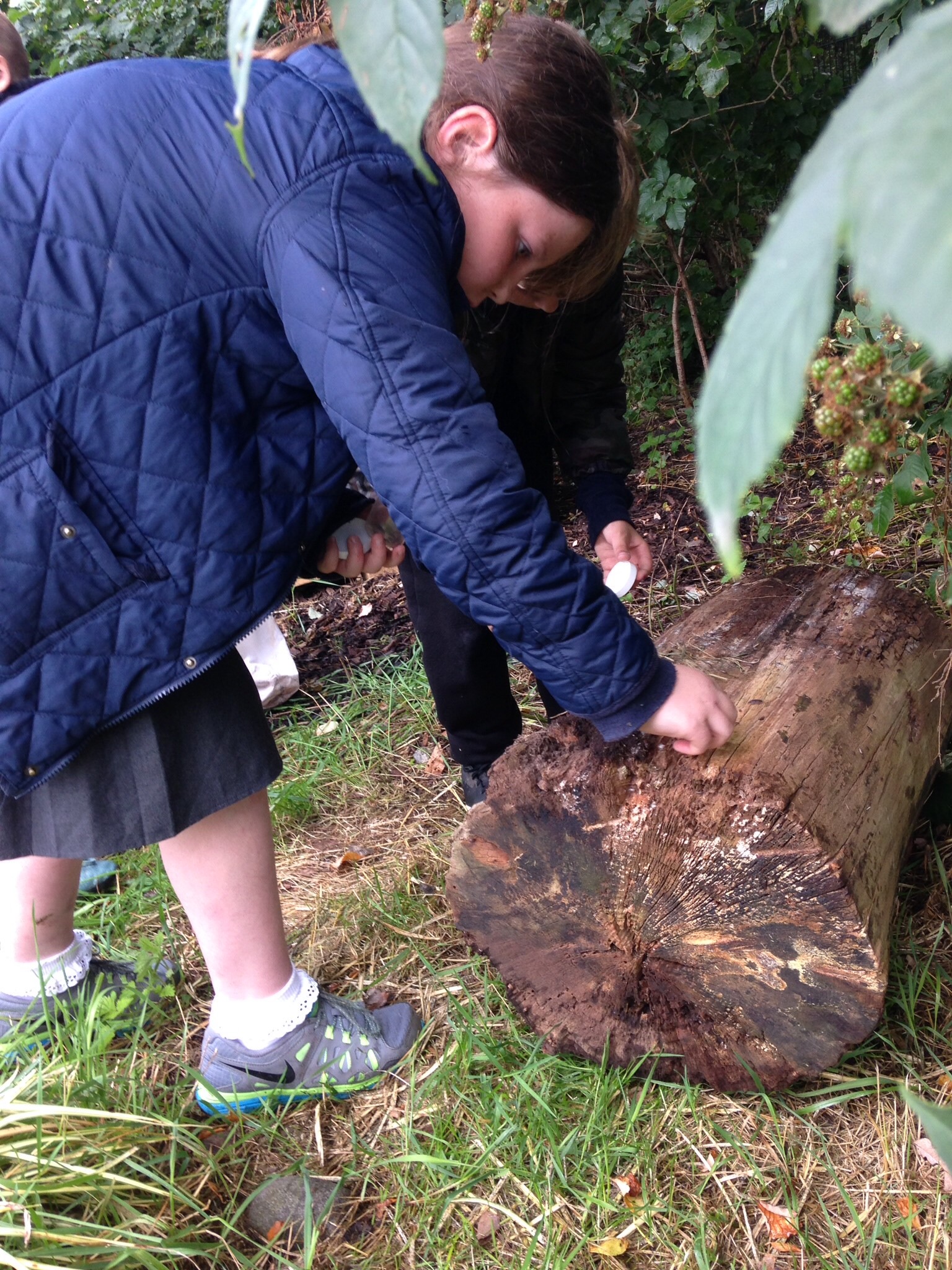A guide to finding mini-beasts
| Site: | Discovery and Learning |
| Course: | Marvellous Mini-Beasts |
| Book: | A guide to finding mini-beasts |
| Printed by: | Guest user |
| Date: | Monday, 8 December 2025, 3:10 AM |
Introduction
A number of different techniques can be used when searching for invertebrates, depending on the type of creature you wish to find and the habitat you are searching in…
You don't need any specialist equipment to get started. Get stuck in and don't worry if you don't find any creatures straight away- the search is part of the fun!
 |
 |
 |
|---|
Hand search
 The easiest and often most effective technique is searching the environment by hand. It is useful to have a variety of small plastic containers (e.g. tupperware) and magnifying pots to examine the invertebrates in. Pooters (see below) are especially useful.
The easiest and often most effective technique is searching the environment by hand. It is useful to have a variety of small plastic containers (e.g. tupperware) and magnifying pots to examine the invertebrates in. Pooters (see below) are especially useful.
Mini-beasts are small! So you need to get close to the ground to find them. Where present, look underneath logs, in leaf litter, or in any artificially created habitats (remembering to return everything to how you found it afterwards). On grassland, stay still for a few moments and you will be better able to spot anything crawling around you.
Pooters
Pooters are small plastic containers with two flexible tubes, which are used to suck a mini-beast into the container.
Pooters are fantastic for getting a closer look at those really small mini-beasts, which are too delicate to handle. They can only be used on creatures smaller than the width of the tube and not on ‘moist’ creatures such as worms or snails.
Remember to suck on the tube with the filter on so you don't get a mouthful of mini-beast!
Sweep netting
 A sweep net is a long net with a wide opening used to catch flying insects or in a grassland environment.
A sweep net is a long net with a wide opening used to catch flying insects or in a grassland environment.
A specific insect, such as a butterfly, could be targeted and caught in order to be identified. Or successive sweeps could be carried out on a section of grassland, capturing anything resting on the grass- often including invertebrates such as beetles, bugs, grasshoppers and spiders.
The top of the net should be closed quickly after each sweep, with a flick of the wrist, to prevent the catch escaping. Care should be taken not to sweep in areas with branches or spiky vegetation, as the net will get caught.
Wildlife equipment such as nets and magnifying pots can be purchased online at NHBS
Bush bashing
 To survey woody vegetation such as trees or hedgerows, a white sheet or tray is placed underneath and the bush is shaken or hit with a stick. Invertebrates will fall onto the sheet and can be collected by hand or using a pooter.
To survey woody vegetation such as trees or hedgerows, a white sheet or tray is placed underneath and the bush is shaken or hit with a stick. Invertebrates will fall onto the sheet and can be collected by hand or using a pooter.
TOP TIP: Use a white sheet to contrast with the colour of the mini-beasts, making them easier to spot.
Pit-fall traps
Pit-fall traps are ground-level traps used to catch any invertebrates that may crawl over.
On soft soil a yoghurt or plant pot can be pushed into the ground and left overnight. Anything that falls into the trap will be caught and can be examined the next day. You may wish to put holes in the bottom of the pot so water can drain through and a protective cover over the top, held up by stones, to prevent rain entering.
Experiment with the best place to put your trap. You could compare what is found in traps placed near vegetation with those placed on open ground. Remember to check your traps daily and remove them after use.
Mist spraying
 A fine water mist-sprayer can be used on any vertical surface (such as hedgerows and walls) to show up spider webs. It is surprising the amount of webs that can be present and the differing shapes and sizes.
A fine water mist-sprayer can be used on any vertical surface (such as hedgerows and walls) to show up spider webs. It is surprising the amount of webs that can be present and the differing shapes and sizes.
Often spiders will be spotted near the webs and can be captured using a pooter. A fun trick is to use a vibrating tuning fork or electric toothbrush to gently touch a web, the spider will rush out into the centre of the web, thinking that an insect has been caught.
Many other types of invertebrates are likely to be spotted whilst searching in this focused way.